We desperately currently need ---
1)Certified Structural Designer - Input support on the Design and Materials.
2)YOU?
Inquire within...
Space Enthusiast + Art Installation
To make the experience fit your profile, pick a username and tell us what interests you.
We found and based on your interests.
We desperately currently need ---
1)Certified Structural Designer - Input support on the Design and Materials.
2)YOU?
Inquire within...
The first piece of the structure just went from 2D to 3D.

One of the burning questions right now is what material is ideal to cover the metal framework underneath. Seeing that we will need a few dozen sheets of it, cost and weight are the main challenges. I made this image to help brainstorm the problem:
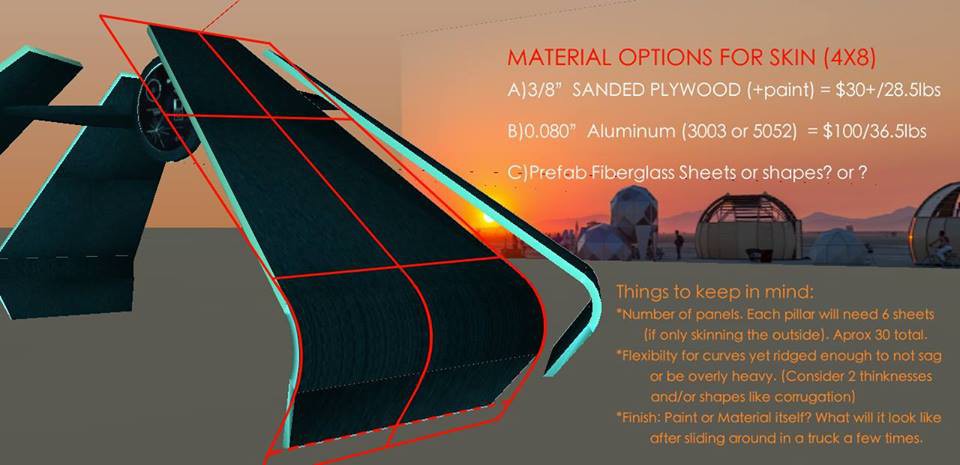
What material do you guys recommend?
Create an account to leave a comment. Already have an account? Log In.
I don't know if you actually have to track the position of Voyager. If you're only doing this for a few months, the Voyagers will be (relatively) static against the rest of the night sky.
Really, what you should be thinking of doing is shining a laser *at one point in the sky* as the Earth rotates. That's far simpler than figuring out the Voyager ephemeris etc...
Depending on your lattitude, you might not be able to see Voyager 2. Or Voyager 1. I forget. But you also have Pioneer 10 and 11. It wouldn't be too hard to put in the data for all of those.
Super perceptive Brian. Yep. All true. My plan was to run the clock forward on a simulator like NASA's EYES and taking a peak at if we'll be able to have line of sight on Voyager on those particular nights but knew that even if we didn't I figured we would always had a second target to point the laser at: Where Voyager is Visually OR Where it is in Reality (It's about 17 light hours away) :) As far as the live data: It would mostly be used to control the LED animations so hoping we can get that listening to DSN. Is this Brian I met at the Hackaday meetup in Pasadena?
Yep, that's me. I'll be out again in May.
You might want to check and see if the data from the DSN is actually interesting. iirc, they're down to a bit or two a second when they connect. Might be worthwhile to get some old downlink data and play that. Field trip?
I'm up for a field trip if possible. Email me your schedule when you get it.
After a little bit of research (this stuff is fantastically hard to find), it doesn't look like Voyager 2 is visible from most of the northern hemisphere at all. The Pioneers are on the ecliptic. 11 is somewhere around Altair, and 10 is - right now - just a little north of Venus. Voyager 1 is, I think, somewhere in Hercules.
Basically, you're looking at doing this with Pioneer 11 and Voyager 1. You can get new horizons in there too. If you're doing this in august, you'll be able to do this in the early evening until around midnight. Great viewing time.
It's an awesome project, and the hackaspace might have a shopbot to cut a huge acrylic record by summer.
Oh, one more thing. Parallax is a huge issue here. I didn't think it would be that bad, but it's at least an hour of RA for Pioneer 11
I'm on the floor Brian. You're amazing! Thank you for checking all that out. We're good on the disc. In fact it's on the CNC as we...type. If we go for your old data idea, we'll likely get it from the original source. We have a planetary scientist and a systems analyst on our crew - and they still work with some of the team that made Voyager 1. (Who, btw, absolutely love what we are doing)
Currently trying to leave the hardware pretty much open to the programer's preferences. It does however need to be able to accept new/live data coming most likely from http://eyes.nasa.gov/dsn/dsn.html and reinterpret into LED animations (perhaps even sounds)
How do you get the data? Will it be provided, or do you need to set up a giant dish antenna?
Likely from NASA's DSN (http://eyes.nasa.gov/dsn/dsn.html)
Become a member to follow this project and never miss any updates
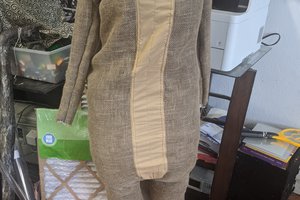
 MasterOfNull
MasterOfNull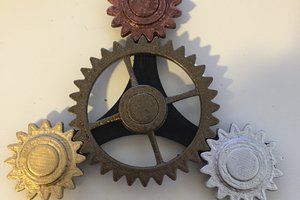
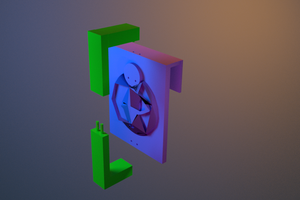
 Alessia Ianni-Palarchio
Alessia Ianni-Palarchio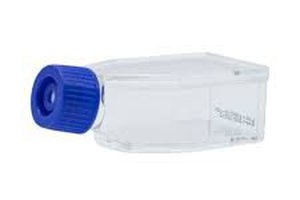
 SapoRano
SapoRano
Big Frickin Lasers! I'm very excited :)